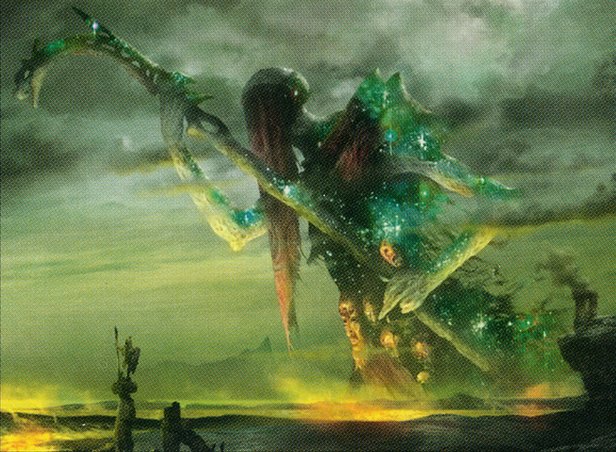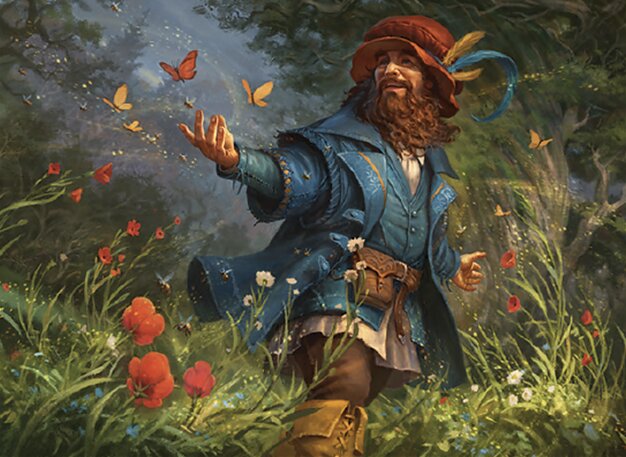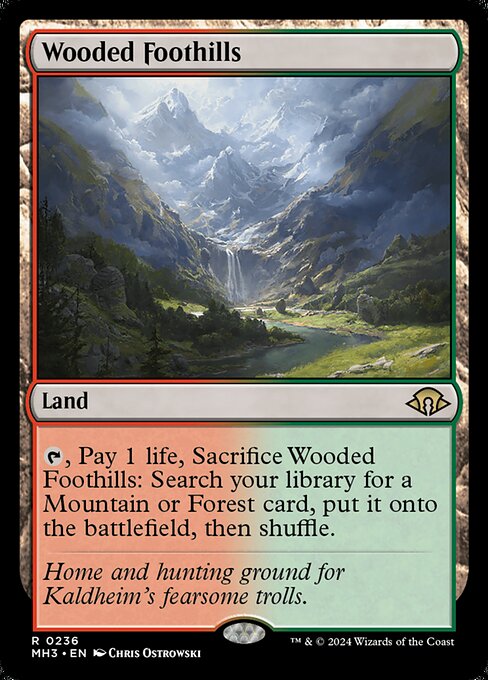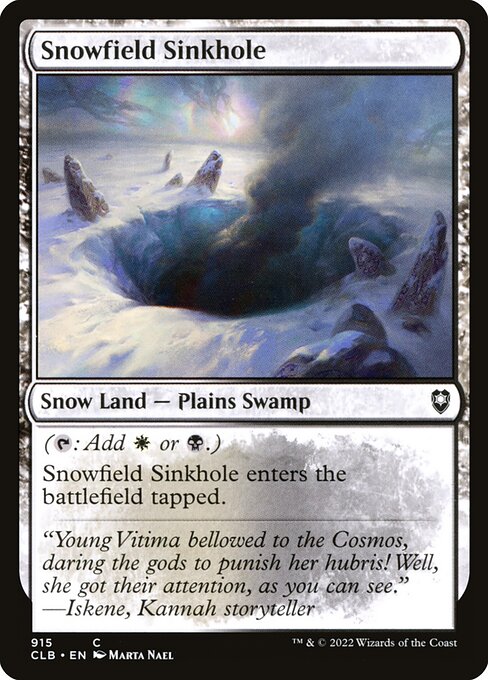Deck & Commander Strategies

Athreos, God of Passage
Utilizes creature death triggers to force opponents to pay life or let creatures return to hand, creating pressure and attrition while enabling repeated value from sacrificing or losing creatures.

Myrkul, Lord of Bones
Focuses on generating enchantment token copies of non-token creatures that die, leveraging ETB effects and resilience to maintain board presence and overwhelm opponents.

Tom Bombadil
Built around sagas and enchantments, animating sagas to gain continuous triggers and value, while maintaining indestructibility and life gain to control the pace of the game.

Mogis, God of Slaughter
Applies constant pressure through damage on opponents' upkeeps, forcing sacrifices and leveraging black-red sacrifice synergies to chip away at opponents’ resources and life totals.
Gameplay Insights
- 1
Athreos’s ability to force opponents to pay life or return creatures to hand created difficult resource management choices, effectively controlling the board state.
- 2
Myrkul’s exile-and-token creation mechanic synergized well with ETB effects, allowing for repeated value from creatures dying and providing resilience against board wipes.
- 3
Tom Bombadil’s saga-centric build relied on animating sagas and leveraging their chapter abilities to chain powerful effects and maintain card advantage.
- 4
Mogis’s incremental damage and sacrifice demands pressured opponents each upkeep, steadily eroding life totals and forcing sacrifices, which synergized with other sacrifice-focused strategies at the table.
- 5
Strategic land plays early on were crucial for mana fixing in the five-color Tom Bombadil deck and for enabling efficient plays by the other commanders.
- 6
Interactions between Mogis’s forced sacrifices and Athreos’s life payment demands created a dynamic tension that shaped players’ decisions throughout the game.
Notable Cards
-

Athreos, God of Passage
-

Myrkul, Lord of Bones
-

Tom Bombadil
-

Mogis, God of Slaughter
-

Fate Unraveler
-

Wooded Foothills
-

Blood Crypt
-

Snowfield Sinkhole
Gameplay Summary
The game featured a tense four-player battle with commanders Athreos, God of Passage; Myrkul, Lord of Bones; Tom Bombadil; and Mogis, God of Slaughter, each bringing unique godly abilities to the table.
Early gameplay involved strategic land plays and resource management, setting the stage for more aggressive interactions.
Athreos used his ability to force opponents into difficult choices by threatening to return dying creatures unless they paid life, creating pressure and attrition.
Mogis consistently applied incremental damage during opponents' upkeeps, forcing sacrifices and steadily whittling down life totals.
Myrkul leveraged creature death triggers to create enchantment token copies, building board presence while exploiting ETB effects.
Tom Bombadil worked with a saga-focused enchantment strategy, animating sagas and benefiting from their chapter abilities to maintain board advantage and card advantage. As the match unfolded, players had to carefully balance life totals and board control to maximize their commanders' strengths.
Athreos's life payment demands and Mogis's upkeep damage created a taxing environment for opponents, while Myrkul’s resilience through token copies and Tom Bombadil’s enchantment synergy provided sustained value.
Key turning points included successful exile and token generation by Myrkul, strategic sacrifices triggered by Mogis, and Tom Bombadil’s saga chain enabling powerful plays.
The game revolved around attrition and value, with each player aiming to leverage their god’s unique mechanics for incremental advantage and eventual victory.
![Battle of the God's EP: 35 Athreos V Myrkul V Tom Bombadil V Mogis [EDH gameplay] thumbnail](https://i.ytimg.com/vi/E2lY5ILeXmg/maxresdefault.jpg)


![Ep 1: Jarred v Jedit v Elas v Jaxis commander / [EDH gameplay] thumbnail](https://i.ytimg.com/vi/fOXepOqTRcA/sddefault.jpg)
!["Battle of the Commanders" EP: 2 Anje vs Zur vs Jedit vs Phabine [EDH Gameplay] thumbnail](https://i.ytimg.com/vi/ZmDQKhu_A_M/sddefault.jpg)
!["4 Player Commander Showdown "- Ep: 3 Hazezon v Dihada v Willowdusk v Raffine [EDH Gameplay] thumbnail](https://i.ytimg.com/vi/BiDOJLw7a3I/sddefault.jpg)
![All will be one! EP: 4 Prosper v Neyali v Ixhel v Karumonix [EDH gameplay] thumbnail](https://i.ytimg.com/vi/1rB3FW952-4/sddefault.jpg)
![Ep: 5 Tawnos v Yuriko v Purphoros v Urza [EDH gameplay] thumbnail](https://i.ytimg.com/vi/ovuvwBzAQ1U/sddefault.jpg)
![Ep: 6 Myrel v Liesa v Kess v Falco [EDH gameplay] thumbnail](https://i.ytimg.com/vi/Au02HpcLJGA/sddefault.jpg)

![Ep: 8 Xira v Atraxa v Goblinson v Akiri [EDH gameplay] thumbnail](https://i.ytimg.com/vi/vRfqRDjvoXs/sddefault.jpg)







![Duke Ulder vs Bane vs Myrkul vs Urabrask [Budget EDH/Commander, MTG Gameplay 2022] thumbnail](https://i.ytimg.com/vi/EjVlvTBkRBs/sddefault.jpg)












![Battle for the One Ring, ft. Frodo, Bilbo, Tom, and Gandalf [EDH/Commander Gameplay 2023] thumbnail](https://i.ytimg.com/vi/eBY9qYO50o4/sddefault.jpg)
![Commander Versus Series: Athreos v. Vhati Il-Dal v. Jenara v. Doran [MTG Multiplayer] thumbnail](https://i.ytimg.com/vi/E2E164x4aAE/sddefault.jpg)









![Commander VS S4E7: Ruric Thar vs Mogis vs Norin vs Jeleva [MTG: Multiplayer] thumbnail](https://i.ytimg.com/vi/7F4SvJRIyDs/sddefault.jpg)
![Commander VS S1E6: ??? vs ??? vs ??? vs ??? [MTG Multiplayer] thumbnail](https://i.ytimg.com/vi/Zdk_0-b6KmE/sddefault.jpg)




![Xyris vs Grimgrin vs Mogis vs Illuna [EDH Gameplay] 2020 thumbnail](https://i.ytimg.com/vi/pHo2vOPZ0vg/sddefault.jpg)
![Sharuum vs Grimgrin vs Mogis vs Kynaios and Tiro [EDH Gameplay] 2020 thumbnail](https://i.ytimg.com/vi/QpJrr_CcH2M/sddefault.jpg)
![Gavi vs Mogis vs Alela vs Kadena [EDH/Commander Gameplay] 2020 thumbnail](https://i.ytimg.com/vi/6T6ss2XZPlU/sddefault.jpg)